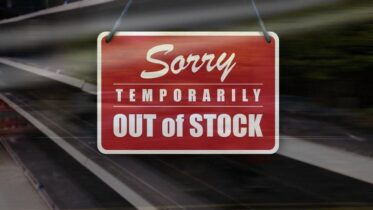
Sales can be volatile, particularly in today’s economy. The cost of stock and its availability can change swiftly, which makes it difficult for sales teams in the trenches to close deals or deliver the promised goods.
If your B2B field sales reps don’t have access to the latest pricing data or inventory lists, they risk misquoting customers with far-reaching results. Aside from the inconvenience felt in your sales team, it could actually result in cancelled orders, a decline in revenue, a poor customer experience, and brand reputation damage.
Sudden price increases, out-of-stock products, and delivery delays mean headaches for your salespeople and your customers. How can your sales team be successful in these challenging times? Transparent communication, an understanding of the issues driving the instability, and the right sales tools are key.
How do you communicate a price change?
Before delivering the news to your customers, the first step is to make sure your entire organisation is aware of your stock price adjustments. Your customers are likely to communicate with multiple people within your business, so everyone should have the most updated information to ensure there are no miscommunications that could damage your company’s reputation and possibly the relationship with your customers. This is especially true for field sales teams who might not be in the office regularly.
Ideally, your B2B field sales team has mobile technology or a sales CRM app that is linked directly into your ERP or inventory software. This will ensure any changes made on the system are immediately reflected in their sales ordering app, regardless of where they are on the road.
As a B2B company, everyone is in the same boat and is likely feeling the same effects of supply chain disruptions and current global events as you are. Prices increase for unavoidable issues such as disrupted logistics, distributor challenges, fuel increases, and product scarcity. How you translate the value and service behind the price increase is as important as the communication itself.
Even though your customers are businesses, there are people who work within the business, so be sure to keep your humanity at the forefront when you communicate price changes. There’s no easy way to tell paying customers that your company will be charging more for the same items, especially since the news could mean a hit to your customers’ bottom line. Soften the blow by being upfront about the price increase and authentic about the reasons. Expect some negative reactions and be as supportive as possible while being clear that the increase is necessary.
What if customers object to the higher price for your goods?
Some customers may react negatively to the increased prices. They may believe your product to be out of their price range now, which could lead to frustration for them and lost revenue for you. There are several ways you can respond:
Reassure your customer
Remind the customer your product solves theirs, and their customers’, current needs and will continue to do so even as manufacturing and supply chain costs rise. It is also worth noting that your suppliers and your customers’ competitors will likely be facing the same challenges, and the consequent knock-on effect on their prices.
Offer a free trial or promotion
Consider offering a free trial, complimentary product, or promotion to help strengthen existing customer relations. It could also enable your prospects and leads to determine if your product adequately addresses their needs. If they are satisfied with your product, the price change will take a back seat to the exciting discovery of a solution.
Mention other satisfied customers
If other customers already accepted the stock price increase, share this and their stories with your objecting customers. It may help hard-line buyers realise that others still have faith in your product, and they might infer that supplies may run out soon if others continue to buy.
Sudden out-of-stock — How to deal with it
Sudden out-of-stock items might be more annoying for customers than stock price increases. Many orders are approved with the understanding that your product is available at the time of negotiation. When your B2B sales team suddenly finds an item is out of stock, or has longer lead times, it can cause frustration that will impact your client’s customers as well. Empty shelves are bad for everyone.
The past two years showed a record number of companies who reported a lack of products on their shelves. Companies know a continued lack of available products to sell can lead to disengaged customers and a damaged brand reputation.
Many companies benefit from maintaining safety stock, a batch of extra goods that can tide a company over in case of sudden surges in demand and help stabilise prices. However, the cashflow required to bulk up on stock, and the risk of product expiry, often makes this option unfeasible.
It is vital that sales reps have access to the latest stock lists to reduce or eliminate this problem. The right sales software will empower sales reps in the field with a more accurate stock count of their products. Your field sales team can breathe a sigh of relief knowing they have up-to-date data on the items they sell.
Know how supply chain disruptions fit into this
The coronavirus pandemic may be slowing down in its third year, but a byproduct of the pandemic remains a major problem. The shutdown of businesses and trading ports earlier in 2020 contributed to a squeeze in the global supply chain. While many industries and countries have fully reopened, the supply chain problems remain: products are more expensive, inventories are running low, and raw materials cost more or are unavailable. The limited availability of transport vehicles, clogged and backlogged ports, the effect of the war in Ukraine on fuel prices, and a lack of available labour have led to vastly increased shipping costs.
How long will the problems persist? Investment bank Morgan Stanley forecasts product supply issues will ease up in the latter months of 2022 and normalise by 2023. For now, however, many companies will have little choice but to impose stock price increases while also dealing with shortages. Salespeople in particular should remain sensitive to these factors affecting the company’s supply chain so they can remain transparent when talking to clients about changes to stock availability and prices.
How the right sales app can help with these changes
Avoid miscommunications around product availability and prices by equipping your salespeople with software that keeps them informed. Skynamo provides powerful cloud-based sales CRM software that gives your organisation continuously updated stock availability and price lists, so your field sales agents have the most accurate information they need to sell with confidence.
These real-time updates ensure sales agents have mobile access to the latest prices and stock levels for the products they sell. When your sales team provides customers with updated and accurate product and price information, your customers are better equipped to make purchasing decisions and feel more confident about investing in you, your product, and your business.
Let’s talk about how Skynamo can equip your sales team to provide your customers the most up-to-date information in an ever-changing economy. Visit us at Skynamo and we’ll be glad to arrange a demonstration.


